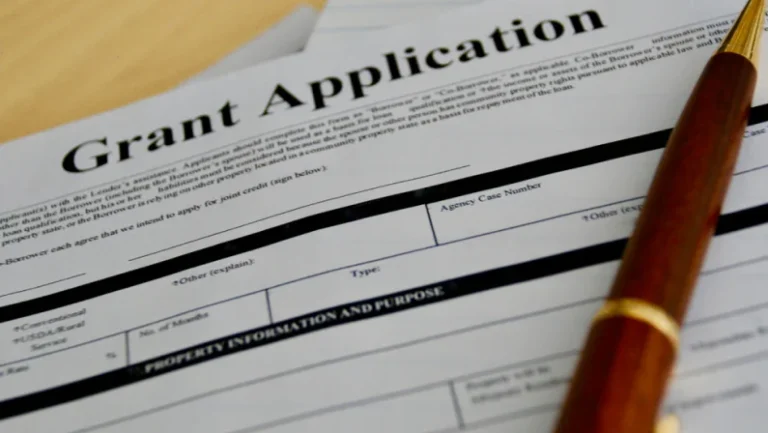Dealing with the RFP (Request for Proposal) process can feel like a daunting task, but with the right strategy and expert guidance, it can be the key to unlocking big contract opportunities.
Whether you’re a seasoned professional or just starting, understanding the ins and outs of RFPs will give you a competitive edge, helping you craft proposals that stand out and align with your potential client’s needs.
In this article, we’ll guide you through mastering the RFP process, giving you the tools to win lucrative contracts and grow your business.
What Is a Request for Proposal (RFP)?

RFP is a formal document issued by an organization to invite potential vendors or service providers to submit proposals for a project or service. It outlines the scope, requirements, and evaluation criteria for the project, allowing businesses to evaluate and compare bids before selecting a provider. The RFP process helps ensure transparency, fairness, and the best value for the organization’s needs.
Why do organizations issue RFPs?
Organizations issue RFPs for a variety of reasons, but the primary goal is to find the best possible solution to meet their needs while ensuring a fair and competitive process. Organizations can make more informed decisions by inviting multiple vendors to submit proposals and choose the most qualified provider.
- Ensures Competitive Bidding: Issuing an RFP allows companies to gather proposals from several vendors, ensuring competitive pricing and better service offerings. This helps the organization get the best deal for its needs.
- Clarifies Project Requirements: An RFP helps define the project’s scope, budget, and timeline, which makes it easier for organizations to evaluate vendor capabilities and ensure they align with expectations. This clarity reduces misunderstandings and costly changes later on.
- Fosters Transparency: The RFP process promotes fairness by allowing all vendors to bid on equal terms. It helps build trust between the organization and its vendors by clearly outlining criteria for selection and decision-making.
When should you issue an RFP?
Issuing an RFP is a strategic decision that should align with the specific needs and goals of the organization. The decision to issue an RFP should be made when an organization is seeking expertise, looking for a variety of solutions, or planning a project that requires a significant investment.
- When the Project Is Complex: For projects with a high level of complexity or technical requirements, an RFP helps define the scope and attract vendors with the right expertise. This ensures that the selected vendor can meet the organization’s specific needs.
- When Seeking Multiple Solutions: If an organization is unsure of the best approach to solving a problem, issuing an RFP can help them explore different solutions. Vendors can offer diverse strategies, enabling the organization to make a well-informed choice.
- For Large-Scale Projects: RFPs are especially useful for large projects that require a considerable budget and resources. By issuing an RFP, organizations ensure that they have access to qualified vendors and can compare bids based on cost, quality, and experience.
Who is involved in the RFP process?

The RFP process is a collaborative effort involving various key stakeholders, each of whom plays a critical role in ensuring the success of the project. Their combined expertise helps organizations evaluate potential vendors, streamline the decision-making process, and select the best solutions.
- Business stakeholders: These individuals are typically the department heads or team leaders who identify the need for the RFP and define the project requirements. Their insights and understanding of the organization’s needs are essential to crafting a clear and detailed RFP.
- Procurement professionals: These experts manage the logistics of the RFP process, including the distribution, collection, and analysis of proposals. They are also responsible for ensuring that the process is fair, transparent, and in line with company policies and objectives.
- Consultants: Consultants may be brought in to offer specialized expertise in areas such as project management, vendor evaluation, or technical requirements. They can provide guidance on selecting the right vendors and structuring the RFP for maximum impact.
- Executives, CFOs, and CPOs: These high-level leaders are often involved in approving the RFP’s scope, budget, and final vendor selection. Their input ensures that the project aligns with the organization’s strategic goals and financial considerations.
- Vendors: Vendors are the external parties who respond to the RFP with proposals outlining their solutions, pricing, and capabilities. Their ability to meet the organization’s needs and demonstrate value plays a pivotal role in the selection process.
What are RFP processes?
The RFP process consists of several key stages that ensure a structured approach to vendor selection. Each phase is essential for ensuring that the RFP is thorough, effective, and leads to the best possible outcome.
- Creation: The creation phase involves defining the project requirements, budget, and goals. This is where the RFP document is developed, outlining what the organization is seeking, the selection criteria, and the expected deliverables from vendors.
- Administration: In this phase, the RFP is distributed to selected vendors, and the organization manages all incoming proposals. Procurement teams oversee the process, ensuring it runs smoothly and that deadlines are met.
- Evaluation: The evaluation phase involves reviewing the submitted proposals, comparing vendor qualifications, and selecting the best fit based on defined criteria. Stakeholders analyze proposals to ensure they meet the organization’s needs and requirements, ultimately leading to vendor selection.
How Does Expert Guidance Elevate Your RFP Strategy?
Expert guidance can significantly enhance your RFP strategy by offering professional insights and strategies that streamline the process and improve outcomes.
A seasoned consultant can help ensure that the RFP is well-structured, the right vendors are targeted, and the evaluation process is fair and transparent.
They also bring industry knowledge to the table, helping to identify potential risks and avoid common pitfalls that could derail the project. With expert guidance, organizations can make more informed decisions, save time, and secure the best possible results from their RFP process.
What Common Mistakes Should You Avoid in an RFP Response?
When responding to an RFP, it’s essential to avoid common mistakes that can undermine your proposal and decrease your chances of winning. By recognizing and addressing these pitfalls, you can create a more compelling and competitive response.
- Failing to follow instructions: Not adhering to the RFP’s specific guidelines can signal a lack of attention to detail. Ensure that you read and follow all instructions carefully to demonstrate your ability to meet client expectations.
- Overpromising or underdelivering: Avoid making unrealistic claims that you cannot support. Be transparent about your capabilities and ensure your proposal accurately reflects what you can deliver.
- Lack of customization: Submitting a generic response that doesn’t address the client’s specific needs is a major missed opportunity. Tailor your proposal to reflect how your solution will solve their particular challenges.
Why Is Team Collaboration Critical in the RFP Process?
Team collaboration is essential in the RFP process because it combines the unique expertise of various individuals within the organization. From understanding client’s needs to develop a competitive solution, the input from multiple team members ensures that the proposal is comprehensive, strategic, and reflective of your company’s best strengths. With effective collaboration, you can present a unified and well-rounded proposal that addresses all aspects of the RFP, leading to a higher chance of success.
How Do You Tailor Your Proposal to Match Client Needs?
Tailoring your proposal to match a client’s specific needs is critical for demonstrating that you understand their challenges and have a solution that fits. Below are key ways to ensure your proposal resonates with the client.
- Understand the client’s objectives: Before drafting your response, thoroughly review the RFP to identify the client’s goals and pain points. Show that you’ve done your research by directly addressing how your solution solves their most pressing issues.
- Highlight relevant experience and expertise: Emphasize your company’s experience with similar projects and showcase case studies or testimonials that demonstrate successful outcomes. This reassures the client that you have the proven skills to meet their needs.
- Align your solution with the client’s timeline and budget: Tailor your proposal to reflect the client’s budget constraints and project deadlines. Offering flexibility in how you can accommodate their timelines and financial expectations can set you apart from competitors.
Can Technology Streamline and Enhance Your RFP Workflow?

Yes, technology can significantly streamline and enhance your RFP workflow by automating repetitive tasks, improving collaboration, and providing better tracking and reporting. With specialized software, you can create templated responses, manage deadlines efficiently, and collaborate in real time with team members. Additionally, technology helps to ensure that all stakeholders stay on the same page, reducing errors and increasing the overall efficiency of the RFP process.
How Do You Evaluate Success and Continuously Improve?
Evaluating the success of your RFP process and continuously improving your approach is key to building a competitive advantage over time. Here are a few ways to assess and enhance your RFP efforts.
- Analyze win-loss ratios: Review the outcomes of past RFP submissions to identify trends and patterns in what worked and what didn’t. This helps you understand where improvements are needed and adjust your strategy accordingly.
- Gather feedback from stakeholders: Solicit feedback from both internal teams and clients to identify areas for improvement. This collaborative approach can uncover insights that lead to more effective proposal development in the future.
- Implement regular process reviews: Conduct periodic assessments of your RFP process to identify inefficiencies or areas where technology could help. Continuously refining your workflow ensures you remain competitive and responsive to client needs.
Ready to Improve Your RFP Strategy? Let LSI Help You Succeed
Incorporating expert guidance and a strategic approach can transform your RFP process and increase your chances of winning big contracts.
LSI stands out as a leading provider of business development services, offering tailored solutions that help businesses navigate the complexities of the RFP process with confidence. Reach out to LSI today to take your proposal strategy to the next level and secure more opportunities!





